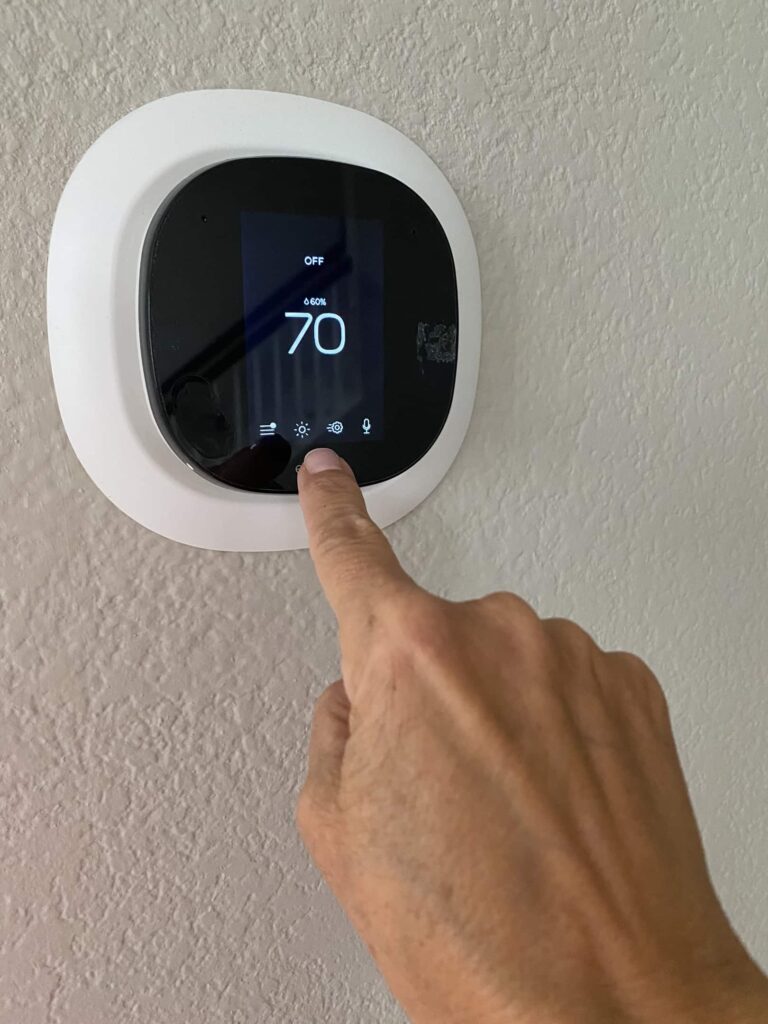Ensuring your home is a comfortable oasis during the sweltering days of a summer heatwave is not just a luxury, but a necessity. Discovering the perfect thermostat settings can make a significant difference in creating a cool indoor environment, providing you with the relief and peace of mind you deserve.
That leads to a common question: What is the ideal thermostat setting during the hottest days? In today's blog, you'll discover best practices for your home thermostat to:
- Save Energy
- Reduce Costs
- Maintain Comfort
Best Energy-Efficient Setting for AC Units
The U.S. Department of Energy recommends using a programmable thermostat to efficiently manage your home's temperature. The U.S. Environmental Protection Agency's (EPA) Energy Star program suggests starting your air conditioning (AC) temperature at 78°F, increasing that value by 7°F for unoccupied homes and by only 4°F while occupants are home or asleep.
While the EPA recommends a maximum indoor temperature of 78°F during summer, it also advises adjusting this to strike a balance between energy savings and personal comfort. For instance, if you prefer a cooler 68°F indoors, set your thermostat to 75°F when you're away and 72°F when you're sleeping, ensuring both comfort and energy efficiency.
How to Save on Energy During a Summertime Heatwave
Saving energy during a heatwave involves more than just adjusting your thermostat. Here are some additional tips:
- Use Ceiling Fans: Fans can make a room feel several degrees cooler, allowing you to raise the thermostat without sacrificing comfort. Ensure your ceiling fan rotates counterclockwise to push cool air down.
- Close Blinds and Curtains: Keep sunlight out during the hottest part of the day to reduce the heat entering your home.
- Seal Leaks: Check and seal any leaks around windows and doors to keep cool and hot air inside.
- Limit Heat-Producing Activities: Avoid using ovens, stoves, and dryers during peak heat. Instead, use microwaves, outdoor grills, or slow cookers.
- Maintain Your AC Unit: To keep your AC system running efficiently, regularly clean or replace air filters, and schedule professional maintenance.
Are There Benefits To Setting the Thermostat Lower at Night vs. Daytime?
Lowering your thermostat at night can bring several benefits. It can make it easier to sleep in a cooler environment, and your air conditioner may not have to work as hard to maintain a lower temperature since outdoor temperatures often drop at night. Setting your thermostat to around 72°F at night can improve sleep quality without significantly increasing utility bills, especially if daytime temperatures are higher on a thermostat.
Practical Tips for Optimal Thermostat Use
In optimizing your home's thermostat settings, follow these quick tips:
- Programmable Thermostats: Investing in a programmable thermostat to automatically adjust temperatures based on when you leave and return home.
- Zoned Cooling: If possible, use zoned cooling to cool only the rooms you use most frequently.
- Regular Monitoring: Monitor your energy usage and adjust settings as needed.
Clements Plumbing Heating and Air: Your Partner in Energy Efficiency and Comfort
Proper thermostat settings during summer heatwaves can significantly impact your comfort and energy bills. Setting your thermostat to an optimal temperature at home, using energy-saving strategies, and considering nighttime temperature adjustments can keep your home cool and costs down.
If you need assistance with your home's cooling system or other plumbing and heating services, contact Clements Plumbing Heating and Air in Lamar, MO, at 417-682-3797. Their experts can help you stay cool and save money this summer.
